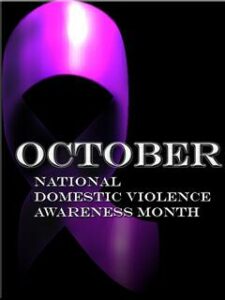By Diana Holan, MS
 Since 2006, the National Network to End Domestic Violence (NNEDV) issues an annual 24-hour survey of domestic violence service agencies in the United States. The results are staggering and have been alarmingly consistent since 2008.
Since 2006, the National Network to End Domestic Violence (NNEDV) issues an annual 24-hour survey of domestic violence service agencies in the United States. The results are staggering and have been alarmingly consistent since 2008.
Every year, on that single survey day, these agencies answer well over 20,000 hotline calls and provide services to more than 65,000 victims. Even so, however, they are unable to meet more than 5,000 requests for safe housing. Annual totals show more than 1.3 million women (1 in 12) report domestic violence and experts agree these numbers are well under-reported due to fear, denial or limited access to services.
The incidence is similar for deaf women, but the abuse tends to be worse and lasts longer. According to one report, “It takes up to seven times longer for a deaf woman to leave (her) abuser than a hearing woman.”
They experience the same types of abuse as hearing women – physical, sexual, emotional, psychological, financial, and spiritual. However, deaf women also experience “abuse of hearing privilege,” such as when the abuser hides hearing devices, refuses all communication with the victim, or gives the wrong information about family, friends or police visits.
There is a significant barrier to offering support if service providers (shelters, agencies, police, courts, etc.) either have no interpreters or inadequate interpreters. A deaf woman may have to first educate the provider about the deaf culture and her own communication requirements before she can begin to discuss the abuse or know how to ask for the help she might need.
Finally, the deaf community is small, well connected and, according to Rems-Sario, “…has historically misunderstood or minimized the issue.” This “double code of silence” further increases isolation and decreases access to help, so victims hesitate to even make a first attempt.
But there are groups working to raise awareness within the deaf community and provide services specifically designed for Deaf women looking for a way out of abuse. The first deaf–pecific advocacy group – Abused Deaf Women’s Advocacy Services (ADWAS) – was started in 1986. It provides education and direction for these women and administers prevention programs for deaf teens.
ADWAS also works with hearing-led domestic violence agencies to supply deaf advocates and sensitize hearing staff. They have adapted their model in many other American cities and now partner with the National Domestic Violence Hotline (NDVH) to further their reach. In 2006, the organization completed and opened “A Place of Our Own” in Seattle, the first Deaf women’s emergency and transitional housing units.
Other organizations are also working to make a difference. The Deaf Wellness Center (DWC) has begun a research project to obtain accurate data regarding domestic violence within the Deaf community. The Office on Violence Against Women has a dedicated information page to help understand Deaf victims, their culture, and best practices. The National Online Resource Center on Violence Against Women lists U.S. Deaf-specific resources and offers beginning deaf language rules and cultural rules.
It will take everyone working together to reduce domestic violence. If you are being abused or know someone else who is being abused, contact the National Domestic Violence Hotline at www.thehotline.org or call 1-800-799-7233 or TTY at 1-800-787-3224.
 Diana Holan, MS, has been practicing audiology for over 20 years in Tucson and is committed to improving communication between patients and their families through the use of state-of-the-art hearing aid technology and various assistive techniques. She received a Bachelor’s of Science in Speech and Hearing and a Master’s of Science in Audiology from the University of Arizona.
Diana Holan, MS, has been practicing audiology for over 20 years in Tucson and is committed to improving communication between patients and their families through the use of state-of-the-art hearing aid technology and various assistive techniques. She received a Bachelor’s of Science in Speech and Hearing and a Master’s of Science in Audiology from the University of Arizona.
Diana is also spear heading a new type of housing for victims of domestic violence coming out of transitional housing. Living in a safe socially sustaining community is a must to end the circle of violence. You can read more about Diana’s work at foresightcommunities.com







I also highly recommend Deaf Hope in Oakland, CA: Sheri Ann Farinha is awesome, and she will take whatever time needed to help a Deaf abuse victim anywhere in the US. Their website is here:
http://www.deaf-hope.org/
And Sheri can be reached through Facebook or e-mail at:
https://www.facebook.com/sheri.farinha/
and [email protected]
Several years ago, she ran an insurgency campaign for President of NAD, and was nearly elected.